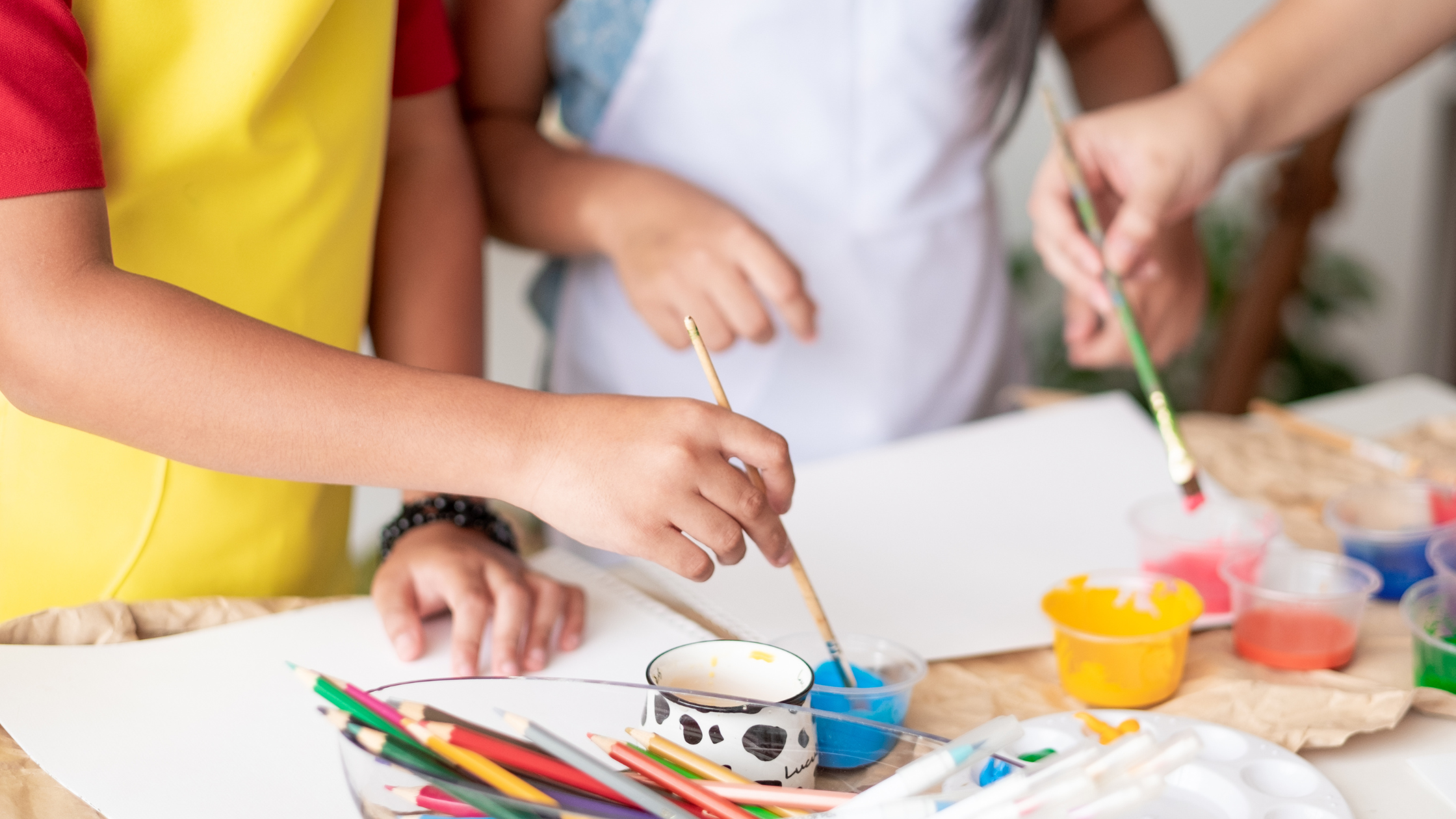

Art is one of the safest environments for self-exploration and learning. We are surrounded by beauty in nature. The colours of the sky, the sun, the flowers, day and night all are resplendent with different colours. Hence it is but natural that all living organism would be attracted to bright and colourful objects.
And here is where it all starts….
The adventures of art are not only joyful but also engaging. From infants to adults the journey is exploratory, challenging, intriguing and most of all educational. Infants are naturally curious and seek ways to express themselves. As infants they gradually gain awareness of different senses, one of the most important ones being sight and touch.
There are various tools that allow children to manipulate materials. Clay for example given early on to a child, helps in developing muscle strength and dexterity. Clay activity is a very good sensory activity and helps children with autism and ADHD .
Patting, squeezing, pulling stretching, rolling helps not only in building muscle strength but enhances hand eyes coordination. The process also helps in the learning of shapes and alphabets for eg:- children with learning difficulties , clay is a very powerful medium. The child is encouraged to replicate the shape with the process of rolling and twisting. Identifying the twist and the turns, the curves and the rotations helps in retention and enhances the brain connections.
Art as a natural self exploratory activity supports a lot of learning and enhances various skills for a young learner.
Experimenting with different mediums such as pencils, crayons, clay helps the child to develop grip and pressure control. Grip control is an essential tool for a child’s development whether it be academic or otherwise. For example,the early introduction to pencils and crayons not only influences the way a child writes: but the same skill is used to hold a spoon to eat.
Very early on in development children learn to imitate through observation. Art is a tool used freely by a child to discover, simplify, repeat and learn. Through this process children learn to focus, concentrate and develop patience. This application is then transferred to other various areas of learning as the child grows.
The connection of shapes to create a meaningful whole is very important. Children at The Aditya Birla Integrated School, the special school near you are taught to identify basic shapes and are trained to observe how they are connected. The simplest of them being a house is made of a square and a triangle. This method of correlation can be transferred to different areas of critical thinking such as maths and later on sciences.
It is a crucial area of development involved in art is critical, creative and
abstract thinking. Once children have learnt relatable shapes and forms they are encouraged to create designs, layouts and plans based on the concepts they have been taught. For eg in the higher grades almost all students are able to draw flowers, leaves, circles and squares. Using these motifs, the children are encouraged to create an entirely fresh work of art with the inclusion of all the above elements. This is an important step in creative thinking and helps the child to think “outside the box” .